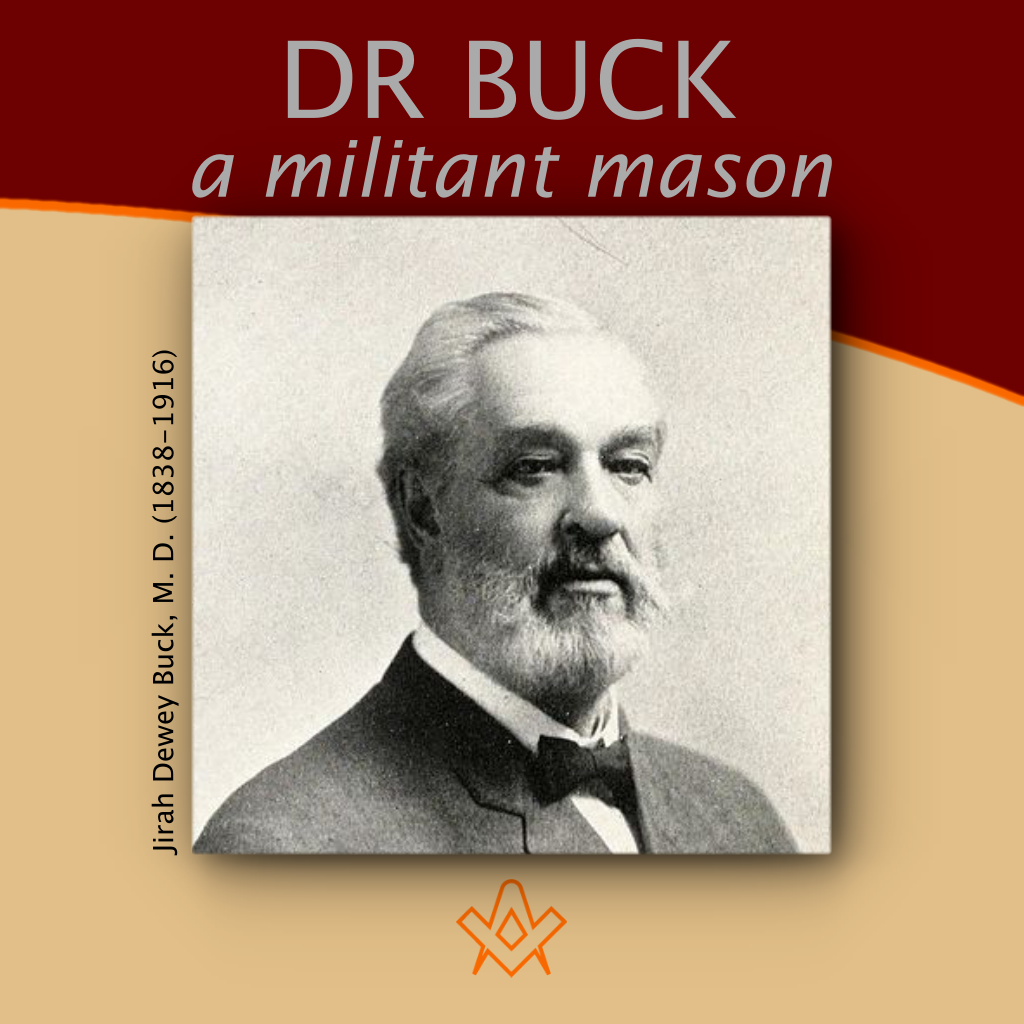TAPS are sounded all too often in our noble army of Builders, as one by one our veteran leaders and students pass into “the Eternal East.”
Few names are more widely known in our Fraternity, and none more highly honored, than that of Dr J.D. Buck, whose death at the mellow age of seventy-eight takes from us a man distinguished alike in Medicine and in Masonry, as indefatigable in his studentship as he was tireless in his benevolence.
He was a man of fine character, of forthright intellect, faithful and true in all the fellowships of life, respected as a citizen, beloved as a friend, honored as a Mason; and if we were asked to sum up his long life in a single phrase it would not be hard to find – the search for truth and the service of mankind.
Self-made and self-trained, he had an insatiable thirst for knowledge, and, his mind, far-ranging by nature, journeyed into many a replete field of research in quest of truth – passing through more than one phase betimes, as he advanced from system to system in his pilgrimage.
Original without being creative, what it lacked in orderliness it made up in the vigor and daring with which it dealt with first principles and ultimate issues in science, philosophy, economics and religion – as witness the names and number of his published works.
What his final conclusions were may be found, no doubt, in the book which he left unfinished, and we are sure it was written in that style virile and direct, touched at times with beauty and fire, which is familiar to all who have followed his pen.
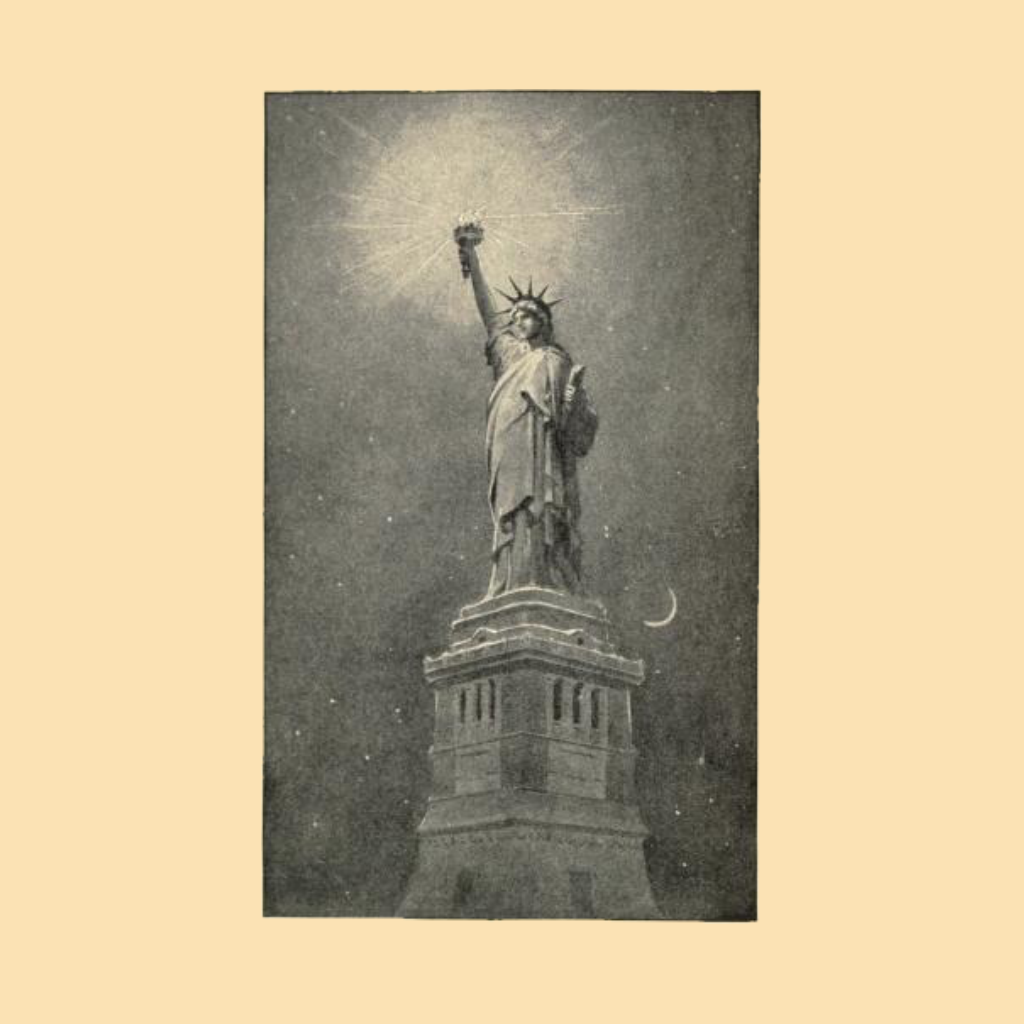
‘Liberty and Light’ – illustration from The Genius of Free-masonry and the Twentieth-century Crusade, J.D. Buck, 1914.
IMAGE LINKED: wikimedia Attribution 4.0 International (CC BY 4.0)
Truly it was a great privilege to have carried an open mind and a kind heart over so long a span of years, watching the revolutionary changes of thought and life between 1838 and 1916.
Better still, our Brother filled his years to the brim with fruitful labors as a citizen, a scientist, a teacher, and a friend of his race, leaving the world better than he found it, helping forward every good cause.
Here follows a brief sketch of his life wherein the leading facts are recited, which his Brethren will want to know:
Dr J.D. Buck was born in Fredonia, N. Y., Nov. 20, 1838.
His early education was obtained at Belvidere Academy, Belvidere, Ill., to which place his parents had removed.
Later he attended the Janesville, Wis., Academy. The early death of his father made it necessary for him to quit school and assume the responsibility of the bread winner for the family, at an age when most boys are in high school.
His work at bookkeeping was stopped at the age of seventeen, because of failing health; and fearing lung trouble he took to the pine woods of Michigan.
He worked at lumbering and swung an axe during the summer. In the winter he taught school, and studied along those fundamental scientific lines which later served to distinguish his work as original in medicine as well as in the field of general literature.
At the age of 23 he enlisted, at the first call for Civil War’ Volunteers, in Merrill’s Horse, Company H., a regiment recruited at Battle Creek, Mich.
Later his health failed, and for three months he lay in the hospital at Camp Benton, Mo., from which point he was honorably discharged and sent home.
On return of his health, he again taught school in the winter, and worked as a master carpenter during the summer, in this way not only aiding the support of his mother and in the discharge of her responsibilities but he began the study of medicine with Dr Smith Rogers at Battle Creek, Mich., later attending Hahnemann Medical College at Chicago, and graduated in 1864 from the Cleveland Medical College.
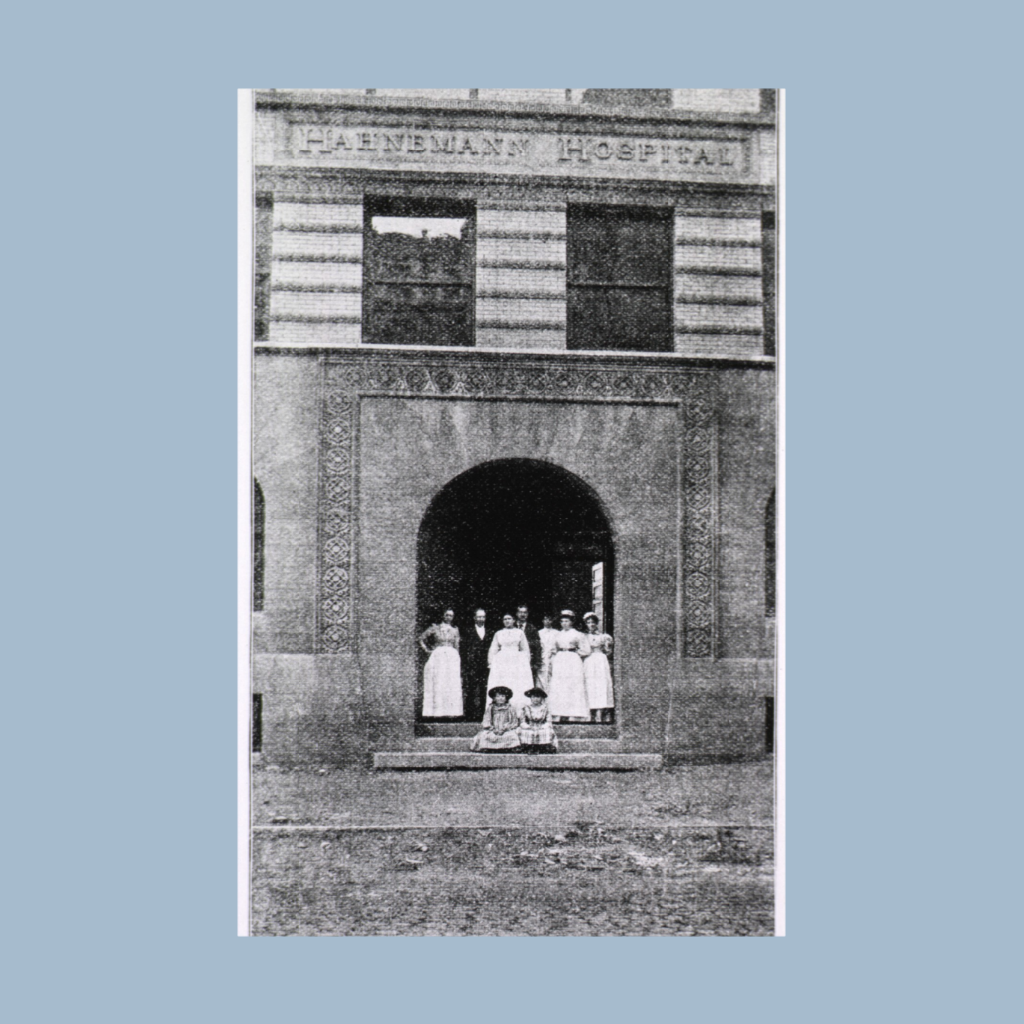
Hahnemann Medical College at Chicago, 1899
IMAGE LINKED: collections.nlm.nih.gov Attribution 4.0 International (CC BY 4.0)
In October, 1865, he was married to Melissa Clough at his old home and place of birth, in Fredonia, N.Y.
In 1866 Dr Buck was made instructor in Physiology and Histology in his Alma Mater at Cleveland, receiving no remuneration at that time nor at any time during forty years of teaching medicine in Cleveland and later in Cincinnati, as this was before the days of endowed medical schools and state medical departments connected with the universities.
Notwithstanding the call to duty in teaching medicine, the demands upon him ever increased, and the rare judgment he brought to bear upon his cases, slowly and surely, made of him the reliable physician and that rare jewel, a sympathetic consultant, to whom the profession long continued to turn in times of doubt and difficulty.
In August, 1870, Dr Buck removed to Cincinnati. In 1872 he called the meeting of physicians which, at Dr Pulte’s office in Cincinnati, resulted in the founding of Pulte Medical College of which Dr Buck was the Registrar and Professor of Physiology from its organization to 1880.
He was then made Dean and Professor of the Theory and Practice of Medicine which position he held almost up to the time, a few years ago, when the Pulte Medical College was absorbed by the Ohio State University.
Some twenty years ago he took up the study of psychology as a basis for his work in medicine in the department of nervous and mental diseases, to which department he was made Professor in Pulte Medieal College.
As a part of his study he made a thorough and exhaustive investigation of hypnotism and spiritualism, and from a purely scientific standpoint concluded that they were both destructive in their very nature and tendency, and therefore not to be made the basis of either the teaching or the cure of nervous or mental troubles.
Pursuing his search, but ever mindful of his duty to his profession, he went from the philosophy of DesCarte and of Schopenhauer to the Vedas of Old India, in the search for the kind of knowledge which would best aid man to help himself.
That he found something others, equally earnest, have missed may be understood by reading his first book, “The Study of Man,” or any one of the other volumes coming from his pen.
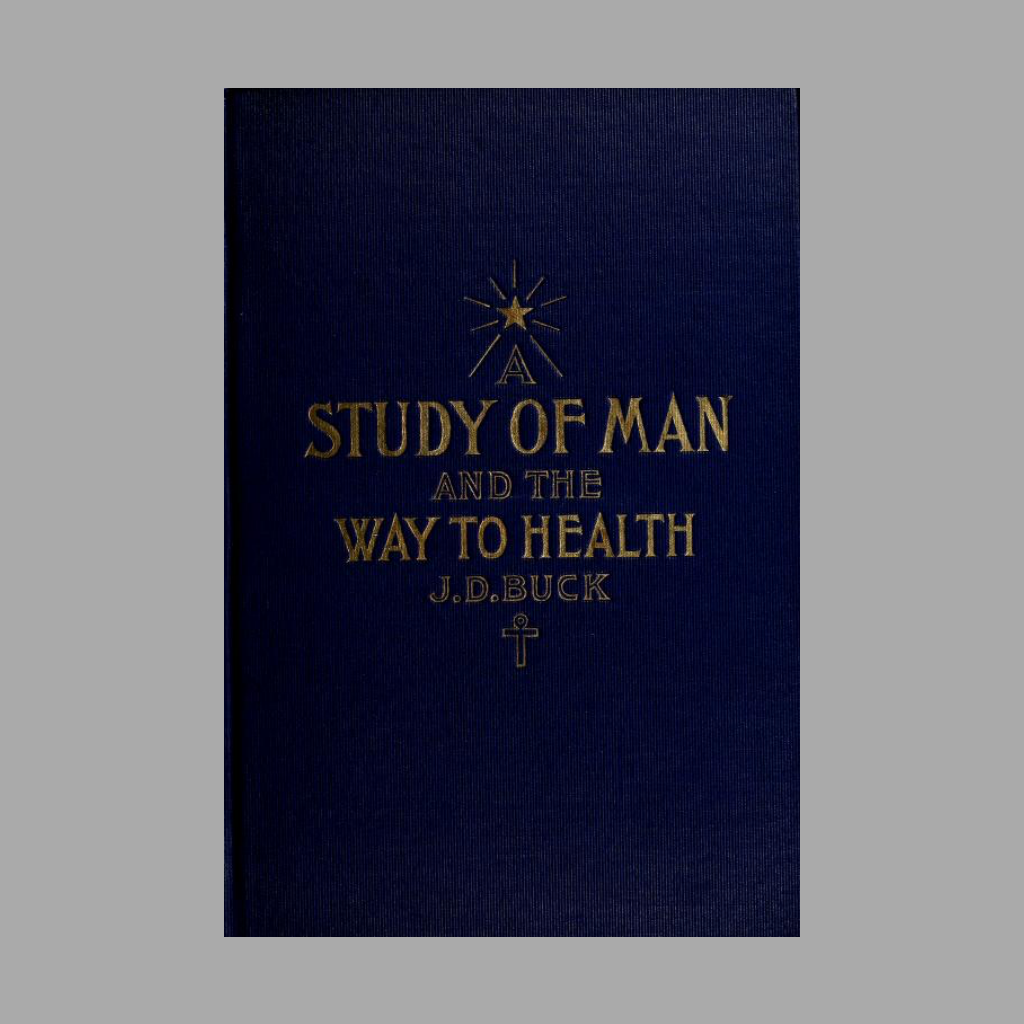
While for the past year he was not actively in the practice of medicine, he has been putting in some spare time on another book dealing with that ever present problem of economics, but the shadow of death has dimmed the light which would have been thrown upon the topic by his handling of the material.
“To be a good man and true” is the first great lesson a man should learn, and over 40 years of being just that in example, Dr Buck won the right to lay down the precept.
This he has done in the kindliest manner possible in the ethical teachings which abound in all his books, and his frequent essays on ethics, economics and other timely topics attest the vigor of his mind, the kindness of his heart and the bigness of his soul.
Dr Buck was an Ex-President and has been a member of the Cincinnati Literary Club for 44 years, and was devoted to its work and its traditions.
He was President of the Am. Section of the Theosophical Society during that period in his career when investigating the theosophical teachings.
He was repeatedly honored by his local and State and National Medical Societies, and was an Ex-President of the Am. Institute of Medicine.
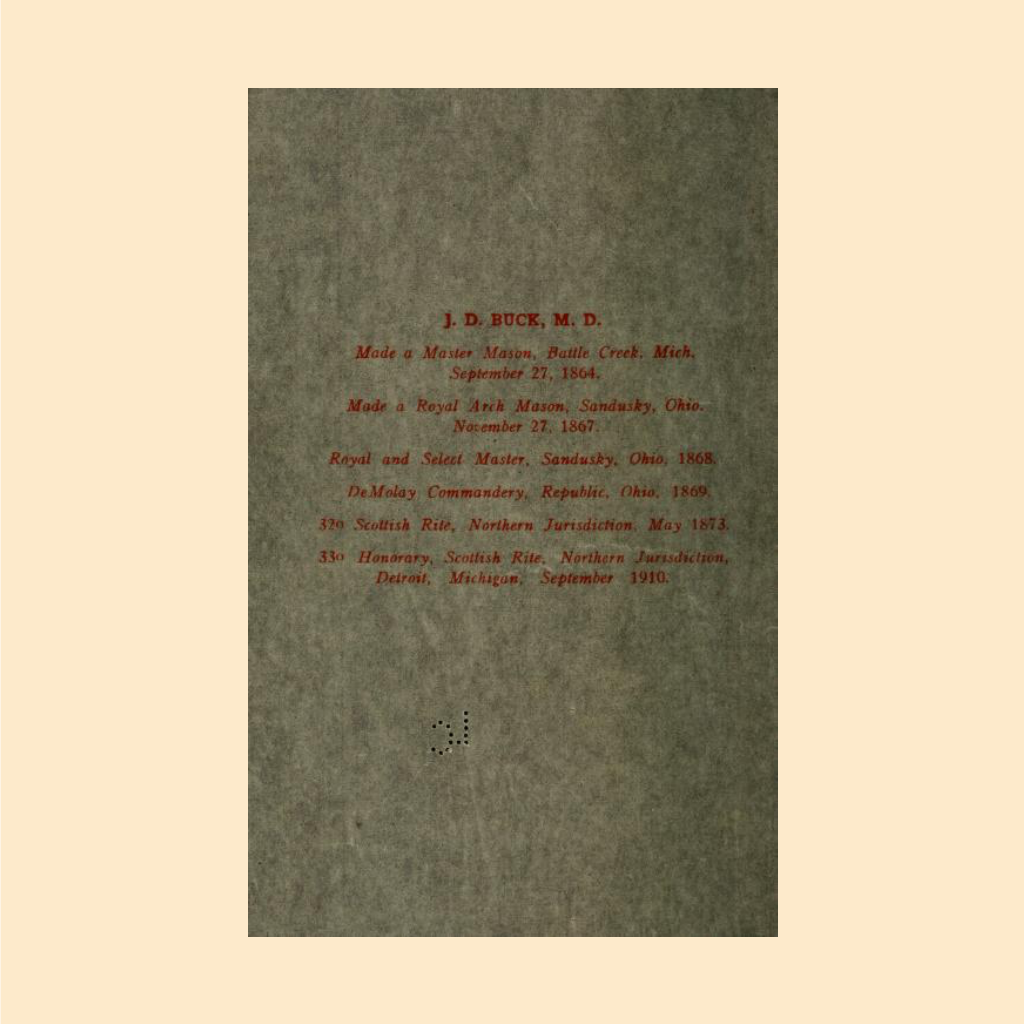
There is no need to add that Dr Buck was an active and influential member of every Rite of our historic Order, holding the highest rank both in the esteem of his Brethren and in the gift of the fraternity – including the honorary Thirty-Third Degree of the Scottish Rite in its Northern Jurisdiction.
Indeed, he was a recognized leader of a definite school of Masonic thought and propaganda; and while we have never been able to agree with all the conclusions of the school which he represented, we are none the less appreciative of its services to the Craft – knowing that Truth is larger than the formula of any one school or of all schools put together.
Surely, by this time we ought to be able to hold differing views without marring our unity of spirit, never forgetting that without charity no truth is of any real worth.
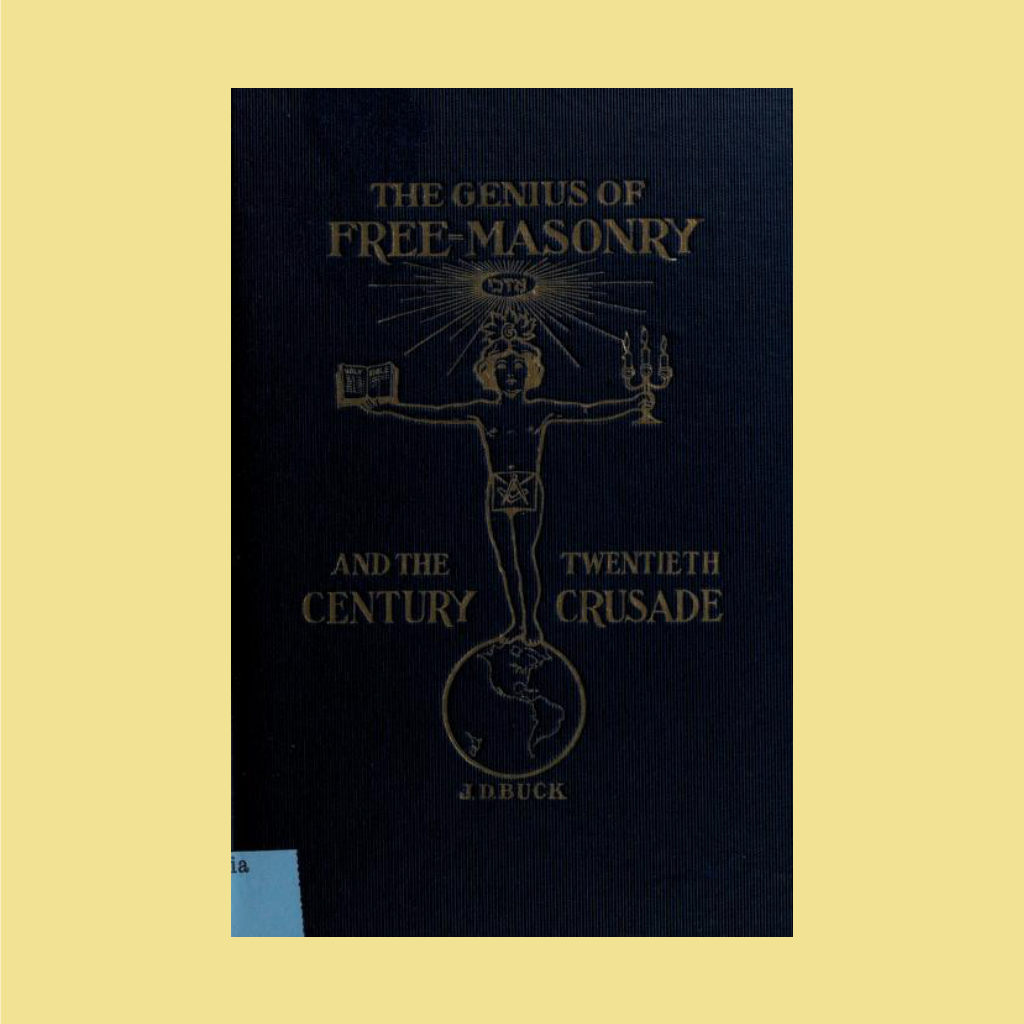
Dr Buck was a militant Mason. There are certain fundamental, far-shining principles which he held it to be “The Genius of Freemasonry” to defend and its mission to expound, exemplify and make prevail – such principles as lighted the way of the Pilgrims of the Mayflower who, defiant alike of arbitrary civil power and insolent ecclesiastical authority, set sail on a wintry sea to found “a church without a bishop and a state without a king.”
Those principles, as he knew, are one with the creative spirit and prophecy of our Republic, and it was therefore that his Masonry, on one side, was a spiritual patriotism in the exposition of which he was truly and impressively eloquent.
In behalf of free thought, free conscience, and the sovereign right of man to worship in the way his heart loves best, he was a crusader – as every Mason must be, albeit some of us may use a harp instead of a hammer for a weapon.
By the same token, he was sleeplessly alert lest these principles, so vital to human welfare, be compromised or undermined by subtle, sinister influences always seeking their overthrow.
Like many others, he felt the danger in our midst of a venerable Hierarchy alien to the genius of the republic and foreign to its ideal, and tirelessly active with a cunning learned through long ages, taking advantage of the liberty of our land to undo, slowly and imperceptibly, its institutions.
Such a disaster is possible, but hardly probable; and if others do not share his fear in the same degree, it nevertheless behooves us to be awake, knowing that eternal vigilance is the price of liberty, and that government without tyranny – like religion without superstition – is a hard-won, precious inheritance of our humanity.
Not all may be able to adopt the method of Dr Buck, but he is a poor patriot, and a poorer Mason, who does not honor his motive, his courage, and his earnestness.
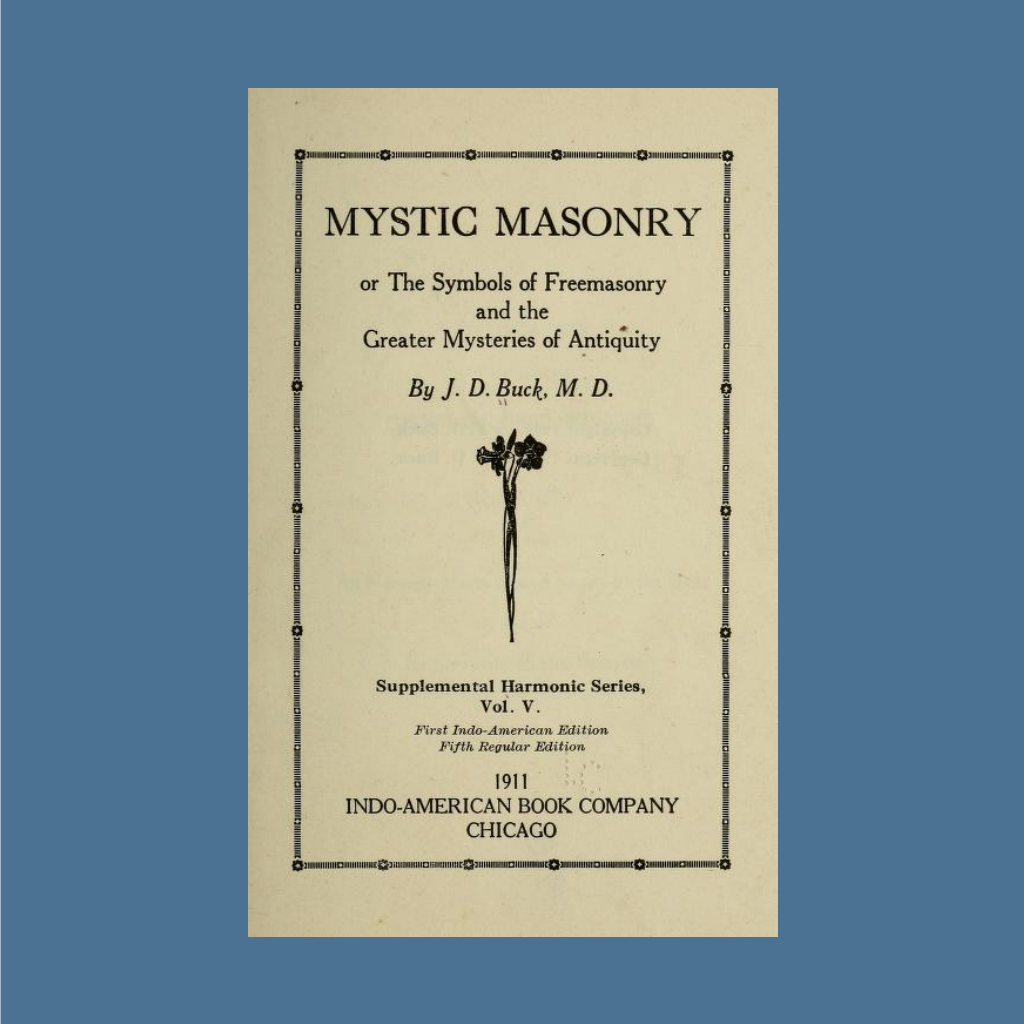
Not a few felt that Dr Buck was in some degree antagonistic to the Christian religion. Not so.
He was profoundly religious, but his insight went deeper than dogmas, down to the primitive fires of faith that are forever burning, and to the permanent fountains of hope that forever flow.
He knew that if all temples were swept away, all creeds lost, and all rites forgotten, the heroic, creative soul of man would rise radiant and new-born, uplifting new temples and dictating new sacred books.
He saw that if the Christian records were destroyed, the spirit of Christ and his basic truths would abide, because they are a part of the order of the world.
As we may read, in the introduction to his “Mystic Masonry,” perhaps his most widely read book:
“What, then, shall we conclude regarding the real genius of Christianity?
Is it all a fable, put forth and kept alive by designing men, to support their pretensions to authority?
Are historical facts and personal biography alone entitled to credit?
While everlasting principles, Divine ‘Beneficence, and the laying down of one’s life for another are of no account?
Is that which has inspired the hopes and brightened the lives of the downtrodden and despairing for ages a mere fancy, a designing lie?
Tear every shred of history from the life of Christ today, and prove beyond all controversy that he never existed, and Humanity from its heart-of-hearts, would create him again tomorrow and justify the creation by every intuition of the human soul and by every need of the daily life of man.
The historical contention might be given up, ignored, and the whole character genius, and mission of Jesus, the Christ, be none the less real beneficent, and eternal, with all of its human and dramatic episodes.
Explain it as you will, it can never be explained away the character remains; and whether Historical or Ideal, it is real and eternal.”
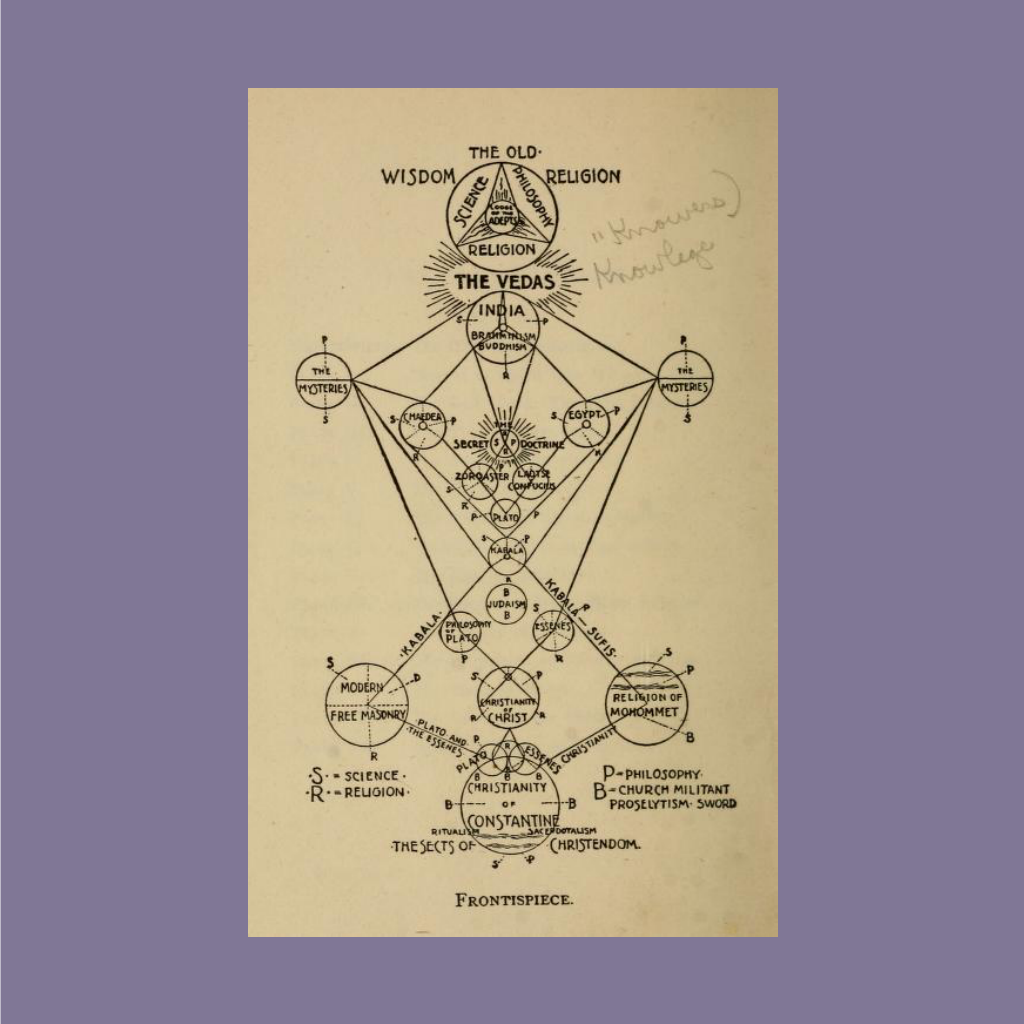
This, greatly said, shows us that the real religion of the man rested upon that profound faith which underlies all creeds, and that inextinguishable hope which overarches all sects.
It is the universal religion. Its ideal is character; its revelation, wisdom; its heaven, hope; its worship, love.
Because Freemasonry is founded upon this universal faith, because it holds aloft the torch-light of Tolerance, Equity and Fraternity, treating all religions with respect, while recognizing certain basic truths common to all – the existence of God, the Brotherhood of Man, and the immortality of the Soul –
Dr Buck loved it, served it faithfully and fruitfully, and found his home in its temple.
With details of his service to Masonry, his studies in its symbolism and philosophy, and his activity in its behalf, we hope to deal more at length at another time, wishing now only to lay a tribute on his new-made grave.
Often we have thought that the best thing he ever wrote was his little book entitled “The Lost Word Found,” not only for its style, but for the glimpse which it gives of the innermost nature of the man and his quest of truth and the ideal.
Whether or not he found the Lost Word – whether any one can find it upon this earth – we need not stop to debate; but we may be sure that our Brother has found it in the Great White Lodge whither he has gone.
A noble and true man, kindly and brotherly, he will be missed in the gracious circle which he adorned, and his name will be spoken with reverence and gratitude wherever Masons meet upon the Level and part upon the Square.
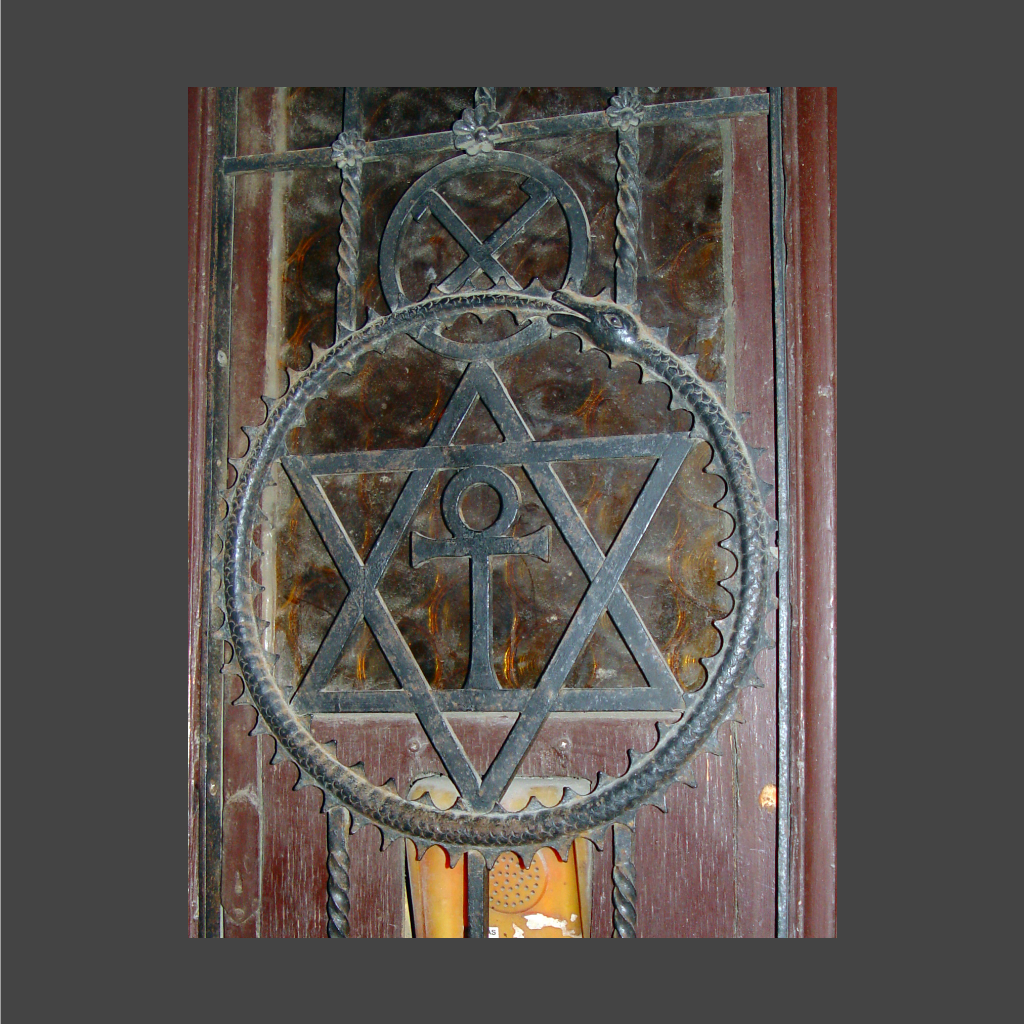
The Theosophical seal as door decoration in Budapest, Hungary
By Etan J. Tal – Own work,
IMAGE LINKED: wikimedia Attribution 4.0 International (CC BY 4.0)
Extracted from The Builder Magazine, February 1917 – Volume III – Number 2
– Bro. Joseph Fort Newton
EDITOR’S NOTE:
Buck was also an influential member of the Theosophical Society – you can read the full theosophy.wiki article here:
“Dr Buck became active in the Theosophical Society in its earliest years – probably in 1879.
In 1880, he was a member of the General Council of the Theosophical Society.
On May 13, 1884, he was appointed by Col. Olcott to be a member of the Board of Control of the Theosophical Society’s activities in the United States.
In Mahatma Letter 140, written in March, 1886, Madame Blavatsky gave A. P. Sinnett an indication that Dr Buck was being ‘helped’ by the Mahatmas to make the Society ‘a grand movement’ in America.
The Cincinnati Theosophical Society was formed on May 9, 1886 at the Buck home on Oak Street, and on October 30 of that year a convention was held there to establish the American Section of the Theosophical Society. Dr Buck presided over that assembly.
Madame Blavatsky quoted an essay of his in The Key to Theosophy saying, ‘No living theosophist has better expressed and understood the real essence of Theosophy than our honoured friend Dr Buck’.
She also referred to him as ‘a true Philaletheian’ in her book, quoting from an article he published in The Theosophist (September 1883, p. 327) titled “The Ethics of Theosophy.”
Dr Buck conducted a cordial correspondence with Mme Blavatsky, but never met her in person. ‘In the year of her death, he sailed for London with Mrs. Buck and Annie Besant to make H. P. B.’s personal acquaintance. But while they were on the ocean H. P. B.’s body was deserted by its soul, and the travellers saw nothing on arrival but her empty room’
At the 1893 World’s Parliament of Religions, Dr Buck delivered an address, ‘Theosophy Historically Considered as Underlying All Religions and Sacred Scriptures – Esotericism in Religions and Philosophies’.”
BOOKS BY J. D. BUCK, M.D.
A Study of Man
Mystic Masonry
The Genius of Freemasonry
Constructive Psychology
The Lost Word Found
The New Avatar
Article by: Joseph Fort Newton
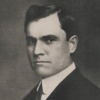
Rev. Newton (1880–1950) , was an American Baptist minister, authored a number of masonic books, including his best-known works, The Builders, published in 1914, and The Men’s House, published in 1923.
He received the third degree of Freemasonry on May 28, 1902 in Friendship Lodge No. 7, Dixon, Illinois, later affiliating with Mt. Hermon Lodge No. 263, Cedar Rapids, Iowa.
He also served as Grand Chaplain of the Grand Lodge of Iowa from 1911 to 1913 and Grand Prelate of the Grand Encampment of Knights Templar.
The Builders has been called "an outstanding classic in Masonic literature offering the early history of Freemasonry."
Books by Jirah Dewey Buck

Mystic Masonry
This is real Initiation: Becoming: At-one-ment.” “There are thousands of Masons, who realize that Masonry contains and implies far more than appears in the ritual and ceremonies of the Lodge.
There is a very widespread and growing interest in this direction, and it is this that Mystic Masonry, above all else, is designed to foster, encourage, and help.”

The Genius Of Freemasonry
This little book has been written in answer to the oft-repeated question—”Has any brother anything to offer for the good of Masonry?”
The following pages are the author’s answer to that question. He can hardly hope that every brother Mason will agree with his views of either Freemasonry or Clericalism.
All he asks is that they read and consider the facts herein set forth and their logical bearing on the signs of the times and the living issues of the day.
While he has endeavored to make the matters herein discussed exceedingly plain, and has re-stated the same problems in various forms (sometimes, perhaps, at the expense of mere literary form in composition) he feels that failure at that point is of little consequence compared with clearness as to principles involved.
He feels that no intelligent brother need be in any doubt as to what the author is driving at, how he regards it, or what—for one—he proposes to do about it.
The issues involved are so momentous, striking as they do at the very foundations of our whole civilization, that to evade, obscure, or ignore them entirely, as many do, seems to the author little short of criminal.
The earnestness he feels regarding these issues and their present immanence, must account for the emphasis employed in handling them.

The Lost Word Found
This scarce antiquarian book is a facsimile reprint of the original. Due to its age, it may contain imperfections such as marks, notations, marginalia and flawed pages.
Because we believe this work is culturally important, we have made it available as part of our commitment for protecting, preserving, and promoting the world’s literature in affordable, high quality, modern editions that are true to the original work.

The New Avatar and The Destiny of the Soul
This work has been selected by scholars as being culturally important, and is part of the knowledge base of civilization as we know it.
This work was reproduced from the original artifact, and remains as true to the original work as possible.
Therefore, you will see the original copyright references, library stamps (as most of these works have been housed in our most important libraries around the world), and other notations in the work.
This work is in the public domain in the United States of America, and possibly other nations.
Within the United States, you may freely copy and distribute this work, as no entity (individual or corporate) has a copyright on the body of the work.
As a reproduction of a historical artifact, this work may contain missing or blurred pages, poor pictures, errant marks, etc. Scholars believe, and we concur, that this work is important enough to be preserved, reproduced, and made generally available to the public.
We appreciate your support of the preservation process, and thank you for being an important part of keeping this knowledge alive and relevant.

Constructive Psychology
This scarce antiquarian book is a facsimile reprint of the original.
Due to its age, it may contain imperfections such as marks, notations, marginalia and flawed pages.
Because we believe this work is culturally important, we have made it available as part of our commitment for protecting, preserving, and promoting the world’s literature in affordable, high quality, modern editions that are true to the original work.
Recent Articles: in people series
 Celebrate the extraordinary legacy of The Marquis de La Fayette with C.F. William Maurer's insightful exploration of Lafayette's 1824-25 tour of America. Discover how this revered leader and Freemason was honored by a young nation eager to showcase its growth and pay tribute to a hero of the American Revolution. |
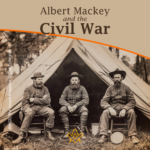 Albert Mackey and the Civil War In the midst of the Civil War's darkness, Dr. Albert G. Mackey, a devoted Freemason, shone a light of brotherhood and peace. Despite the nation's divide, Mackey tirelessly advocated for unity and compassion, embodying Freemasonry's highest ideals—fraternal love and mutual aid. His actions remind us that even in dire times, humanity's best qualities can prevail. |
 Discover the enduring bond of brotherhood at Lodge Dumfries Kilwinning No. 53, Scotland's oldest Masonic lodge with rich historical roots and cultural ties to poet Robert Burns. Experience rituals steeped in tradition, fostering unity and shared values, proving Freemasonry's timeless relevance in bridging cultural and global divides. Embrace the spirit of universal fraternity. |
 Discover the profound connections between John Ruskin's architectural philosophies and Freemasonry's symbolic principles. Delve into a world where craftsmanship, morality, and beauty intertwine, revealing timeless values that transcend individual ideas. Explore how these parallels enrich our understanding of cultural history, urging us to appreciate the deep impacts of architectural symbolism on society’s moral fabric. |
 Discover the incredible tale of the Taxil Hoax: a stunning testament to human gullibility. Unmasked by its mastermind, Leo Taxil, this elaborate scheme shook the world by fusing Freemasonry with diabolical plots, all crafted from lies. Dive into a story of deception that highlights our capacity for belief and the astonishing extents of our credulity. A reminder – question everything. |
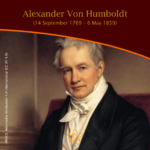 Dive into the extraordinary legacy of Alexander Von Humboldt, an intrepid explorer who defied boundaries to quench his insatiable thirst for knowledge. Embarking on a perilous five-year journey, Humboldt unveiled the Earth’s secrets, laying the foundation for modern conservationism. Discover his timeless impact on science and the spirit of exploration. |
 Voltaire - Freethinker and Freemason Discover the intriguing connection between the Enlightenment genius, Voltaire, and his association with Freemasonry in his final days. Unveil how his initiation into this secretive organization aligned with his lifelong pursuit of knowledge, civil liberties, and societal progress. Explore a captivating facet of Voltaire's remarkable legacy. |
 Robert Burns; But not as we know him A controversial subject but one that needs addressing. Robert Burns has not only been tarred with the presentism brush of being associated with slavery, but more scaldingly accused of being a rapist - a 'Weinstein sex pest' of his age. |
 Richard Parsons, 1st Earl of Rosse Discover the captivating story of Richard Parsons, 1st Earl of Rosse, the First Grand Master of Grand Lodge of Ireland, as we explore his rise to nobility, scandalous affiliations, and lasting legacy in 18th-century Irish history. Uncover the hidden secrets of this influential figure and delve into his intriguing associations and personal life. |
 James Gibbs St. Mary-Le-Strand Church Ricky Pound examines the mysterious carvings etched into the wall at St Mary-Le-Strand Church in the heart of London - are they just stonemasons' marks or a Freemason’s legacy? |
 Freemasonry and the Royal Family In the annals of British history, Freemasonry occupies a distinctive place. This centuries-old society, cloaked in symbolism and known for its masonic rituals, has intertwined with the British Royal Family in fascinating ways. The relationship between Freemasonry and the Royal Family is as complex as it is enduring, a melding of tradition, power, and mystery that continues to captivate the public imagination. |
 A Man Of High Ideals: Kenneth Wilson MA A biography of Kenneth Wilson, his life at Wellington College, and freemasonry in New Zealand by W. Bro Geoff Davies PGD and Rhys Davies |
 In 1786, intending to emigrate to Jamaica, Robert Burns wrote one of his finest poetical pieces – a poignant Farewell to Freemasonry that he wrote for his Brethren of St. James's Lodge, Tarbolton. |
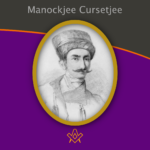 Alex Lishanin explores Mumbai and discovers the story of Lodge Rising Star of Western India and Manockjee Cursetjee – the first Indian to enter the Masonic Brotherhood of India. |
 Aleister Crowley - a very irregular Freemason Aleister Crowley, although made a Freemason in France, held a desire to be recognised as a 'regular' Freemason within the jurisdiction of UGLE – a goal that was never achieved. |
 Sir Joseph Banks – The botanical Freemason Banks was also the first Freemason to set foot in Australia, who was at the time, on a combined Royal Navy & Royal Society scientific expedition to the South Pacific Ocean on HMS Endeavour led by Captain James Cook. |
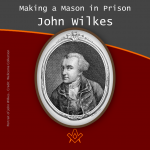 Making a Mason in Prison: the John Wilkes’ exception? |
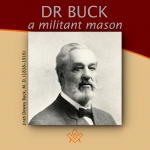 "To be a good man and true" is the first great lesson a man should learn, and over 40 years of being just that in example, Dr Buck won the right to lay down the precept. |
 Elias Ashmole: Masonic Hero or Scheming Chancer? The debate is on! Two eminent Masonic scholars go head to head: Yasha Beresiner proposes that Elias Ashmole was 'a Masonic hero', whereas Robert Lomas posits that Ashmole was a 'scheming chancer'. |
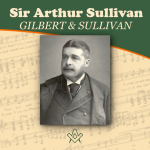 Sir Arthur Sullivan - A Masonic Composer We are all familiar with the comic operas of Gilbert and Sullivan, but did you know Sullivan was a Freemason, lets find out more…. |
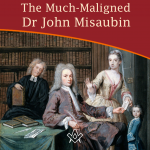 The Much-Maligned Dr John Misaubin The reputation of the Huguenot Freemason, has been buffeted by waves of criticism for the best part of three hundred years. |
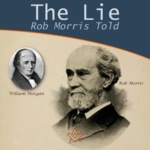 Was William Morgan really murdered by Masons in 1826? And what was the lie Masonic author Rob Morris told? Find out more in the intriguing story of 'The Morgan Affair'. |
 Lived Respected - Died Regretted Lived Respected - Died Regretted: a tribute to HRH The Prince Philip, Duke of Edinburgh |
 Who was Moses Jacob Ezekiel, a Freemason, American Civil War Soldier, renowned sculptor ? |
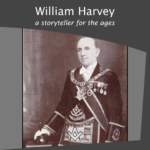 A Masonic author and Provincial Grand Master of Forfarshire in Scotland |
 Who was Philip, Duke of Wharton and was he Freemasonry’s Loose Cannon Ball ? |
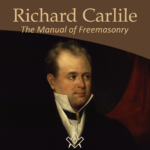 Richard Carlile - The Manual of Freemasonry Will the real author behind The Manual of Freemasonry please stand up! |
 Nicholas Hawksmoor – the ‘Devil’s Architect’ Nicholas Hawksmoor was one of the 18th century’s most prolific architects |
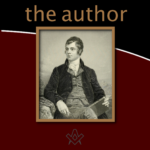 By Bro. Anthony Oneal Haye (1838-1877), Past Poet Laureate, Lodge Canongate Kilwinning No. 2, Edinburgh. |
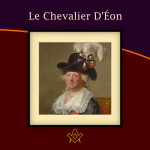 The Curious Case of the Chevalier d’Éon A cross-dressing author, diplomat, soldier and spy, the Le Chevalier D'Éon, a man who passed as a woman, became a legend in his own lifetime. |
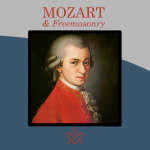 Mozart Freemasonry and The Magic Flute. Rev'd Dr Peter Mullen provides a historical view on the interesting topics |
masonic knowledge
to be a better citizen of the world
share the square with two brothers

click image to open email app on mobile device
